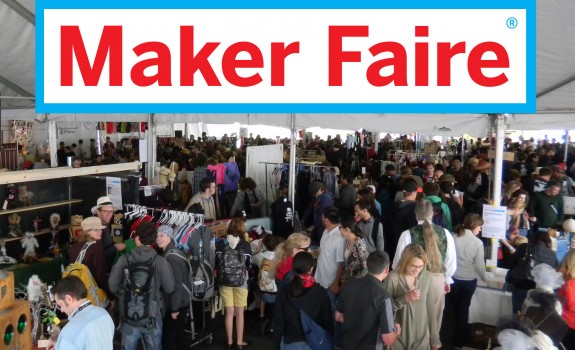What’s the best way to calculate pricing for handmade items?
Pricing is a delicate process, and one that you should continually analyze and refine, because your sales can be hurt just as much by pricing items too low as by pricing them too high. It’s a common misconception that lower prices equal higher sales. In reality, price has a good deal of influence on how people perceive the quality of your goods.
Last year, Meg Mateo-Ilasco, the author of Craft, Inc. (a crafty-business book I highly recommend) led a session at a Biz Lady meet-up sponsored by design*sponge. During this session, she told the group about how she tried to ramp down her invitation business by doubling her prices. She figured that if she raised her prices significantly, far fewer people would be willing to hire her. In fact, just the opposite happened–she became inundated with clients who wanted the high-quality design her prices indicated.
The perceived quality of your goods is just one factor in determining their price. You also need to consider the cost of your materials, the time it took to make your products, and overhead–things like your rent and utilities if you have a separate studio (even if it’s within your house), merchant service fees, etc. You should build a living wage into the price of your work, and folks, it should not be minimum wage! You are a skilled craftsperson, not an indentured servant. Just because a factory in Indonesia pays its workers slave wages doesn’t mean you have to pay yourself that way. The typical wage for someone working in a creative field in San Francisco is about $22/hr.
Of course, you have to look at what the market can handle, too, and a craft fair is a different market than a gallery. Your intricate and beautiful quilt may be worth $2,000, but you probably won’t sell it at the San Francisco Bazaar. That doesn’t mean you should lower the price, it just means you need to find another venue for it, and bring your $50 quilted pillows instead.
I recommend using the following calculations as a good starting point:
- Double the cost of materials + cost of your time + overhead = wholesale price
- Wholesale price x 2 = retail price
Then do a search for similar products to yours on Etsy and see how they price out. How high do they go before you come across shops that aren’t selling? Can you add some more profit to your prices and still be within range? Finally, test your prices online and/or at a few craft fairs. Make adjustments as necessary.
I craft for the love and not the money, so I just charge people what it costs to cover my materials. Why does this make some other crafters so mad?
In short, because some of us craft for the love and the money, and you’re threatening our livelihood. Underpricing is a serious issue in the craft world. It hurts other vendors by making their goods look overpriced by comparison, and it hurts crafters everywhere by telling the world we don’t think our work is worth as much as that of “real artists.” If you really just want to support your crafting habit by essentially giving your products away, I would recommend sticking to selling them on your own–to friends, family, and co-workers, or on your own web site. Better yet, do give them away (and use the tax write-off to support your habit), or sell your products at full price and donate the difference to a worthy cause.
As a side note, many crafters underprice for other reasons, such as trying to compete with mass-produced goods or because they feel embarrassed at valuing their work too highly. At the You Bazaar I came across a 10-inch plush character priced at $8. I don’t care if the fabric, stuffing, thread and needle all came out of the trash; that price is too darned low. It made me think there must have been something wrong with it, and that is the last thing you want your prices to imply to potential customers.
People buy handmade because they want quality and artistry, and for the msot part, they are willing to pay for it. As Mateo Ilasco says, “You may be asked to explain your prices, but you should never apologize for them.”
I can’t really afford to charge wholesale or consignment prices, but I want the extra exposure. Is it worth the financial hit?
That depends on what sort of exposure you want and how much of a hit you are taking. It may be worth it to keep one featured product at a popular store that gets frequent press coverage or has lots of events, as this could drive more people directly to your business. On the other hand, a small store with few walk-in customers, one whose customer base doesn’t overlap with yours especially well, or one that doesn’t feature your product prominently might not be worth the investment.
You can also try to negotiate your own wholesale prices/consignment splits, especially with online stores that carry a low overhead. 50/50 may be typical, but if you explain your pricing and your product is popular, a store owner might agree to 60/40 or even 70/30. You can even have different splits for different products.
Can I set different prices for cash and credit?
‘Fraid not. I know it sucks, since you have to hand over part of every sale to the credit card companies, but it’s part of the merchant agreements for Visa, Mastercard and American Express that you can’t charge customers extra for using a credit card. Only places like gas stations, which use totally separate systems for cash and credit (cashier vs. in-pump card-reader) can do this.
Tags: consignment, craft inc., craft pricing, design sponge, living wage, meg mateo ilasco, pricing formula, product pricing, underpricing






Thank you so much for this article. I just wrote a blog post a couple of days ago explaining why my etsy prices were going up and you express my ideas so much more eloquently. I’m going to post a follow up linking to your article because I think more people have to realize that we sell handmade to make a living, not to complete against those who undercut their own prices, or against mass market retailers.
Thanks for posting this info! The formulas you suggest are really helpful for sanity checking product pricing. For a lot of my products, they calculate prices too high for my market to bear based on price comparisons of similar products, etc. But, they’re a good checkpoint anyway and further highlight the importance of continuing to source more competitively priced materials and further streamlining my processes so that my labor cost actually works out to a living/livable wage.